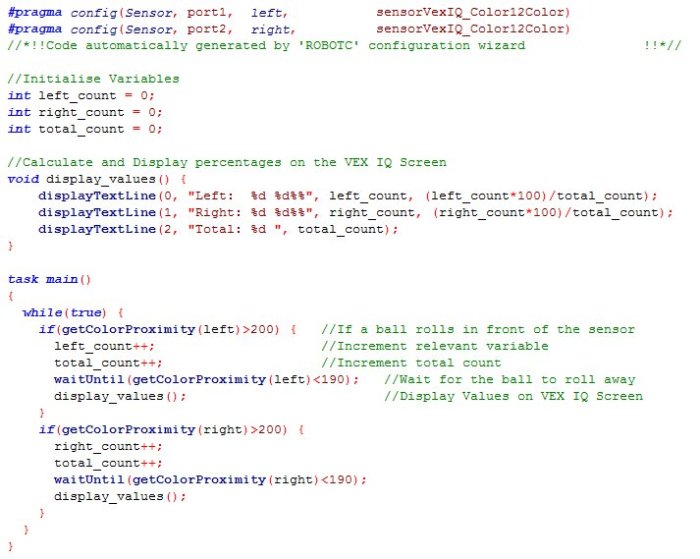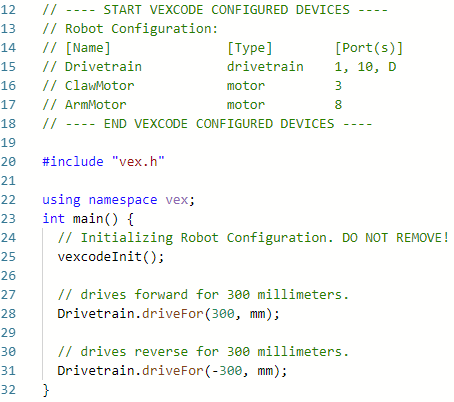

This is good for line following at slow speeds, but note that it could cause the robot to pop a wheelie if a lot of power was suddenly given to both wheels going forward (see the ). This means that the robot has 90% (560/622) of the weight over the wheels and only 10% of the weight over the front skis. Using a small scale in the experiment shown below, we find that the robot weights a total of 622 grams, with 560 grams over the back wheels. This Line Follower robot is designed to have almost all of its weight over the drive wheels. If too much weight is over the sliding part, the robot will struggle to turn, might get caught up and stall, or the drive wheels might start slipping. You want to have most of the robot's weight over the drive wheels, and just enough weight over the sliding part to keep the robot stable and avoid tipping over. Building Tip: Weight Balance When building a robot that depends on sliding on something (the gray front 'skis' in this project) to turn, it is important to consider the weight balance of the robot.

The NXT display should be right side up for reading when you are behind the robot. Note: The gray skis and the light sensor are on the front end of the robot. 10 Use two wires to connect the left motor (the light sensor is near the front of the robot) to port B on the NXT and the right motor to port C on the NXT. If you temporarily remove the two cross beams on the bottom of the robot, you can route the wire neatly under the robot as shown. 7 8 9 Use the shortest wire to connect the light sensor to port 3 on the NXT. 6 The dark gray angled beams in the back will normally hover just above the surface, but they are there to provide stability in case the robot tries to tip backward (for example, when pressing the NXT buttons). RobotC (4.28+) Drivers.Ĥ 5 The light sensor is placed between the front 'skis' and near the place where the skis contact the surface, so that the skis will push down lightly and smooth out any large wrinkles in the mat under the light sensor, to help it get a consistent reading. Detect and follow a line Write line follower programs with your own decision. Line Follower Sensor for NXT or EV3 (LineLeader-v2). Implementation of the line- following program is very similar to the ROBOTC. Programming Solutions for the LEGO Mindstorms NXT. With Mindstorm NXT kit used together with the RobotC integrated.
#Robotc programming examples how to
Line following robot tutorials – how to build. 3 The gray 'skis' (which are on the front on the robot) allow the robot to slide from side to side so that it can turn accurately. Line Follower:: Building Instructions 1 2 Note: Be sure the NXT brick is facing the right way. NXT Line Follower Fun Projects for your LEGO ® MINDSTORMS ® NXT! Flash game development by example source code.

For NXT, many of the programs below use either 'Calibrated' or 'Un-Calibrated' light sensors. Line Following RobotC Include File Exercise in Line Following.


 0 kommentar(er)
0 kommentar(er)
